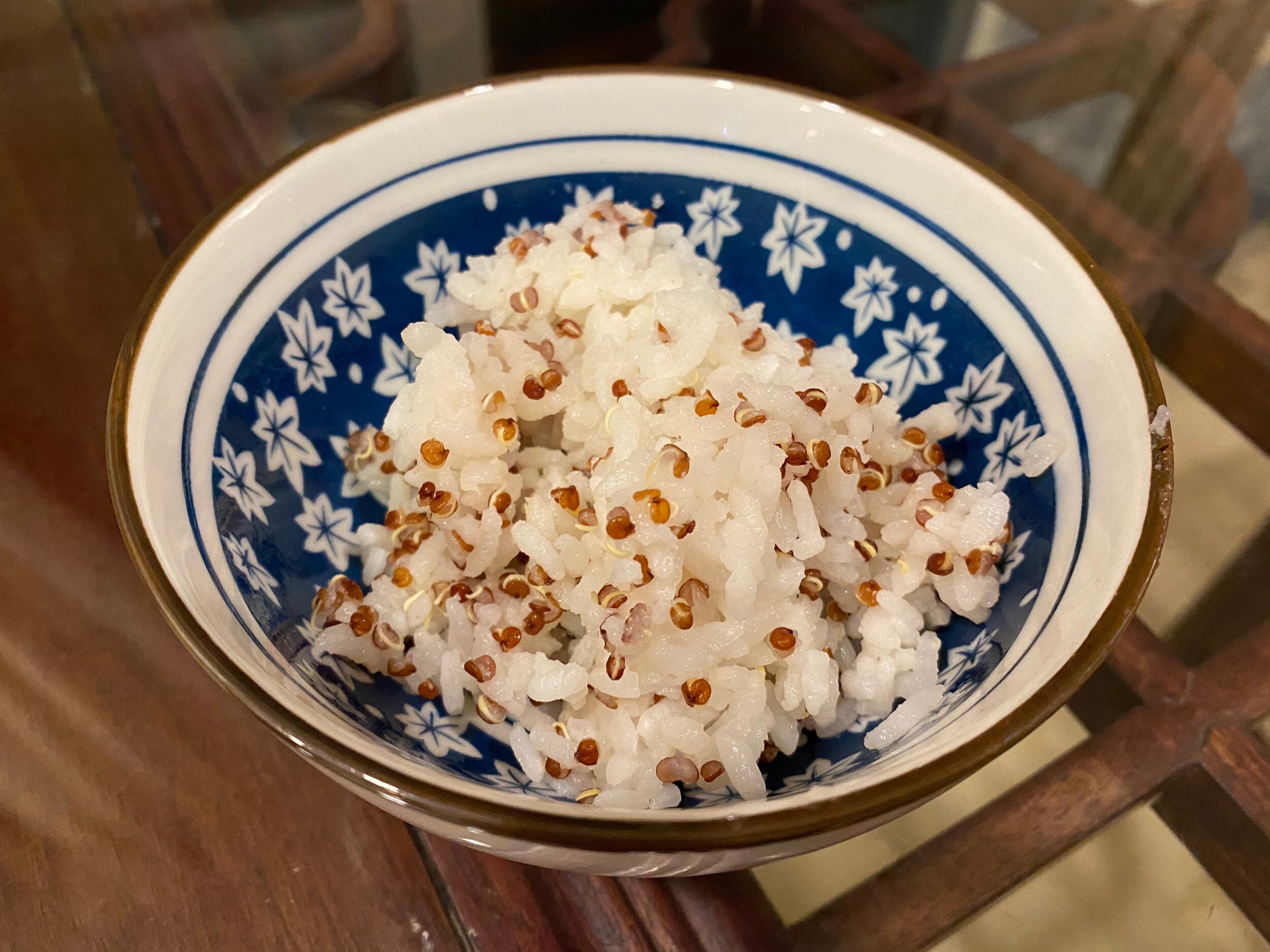I’m going to teach a fried rice cooking class next week, but I thought I would back up a bit and start with talking about how to make rice. At first, it might seem like a pretty silly thing to talk about — especially with automatic rice cookers and InstantPots these days. But I’ve found that with my various moves around the world, getting rice right isn’t as easy as just pressing a button.
For one thing, different rices (short grain, long grain, brown, jasmine) each have slightly different cooking times and different requirements for the rice-to-water ratio. Growing up in a Chinese household, I learned the old imprecise “knuckle” trick: place the rice in the cooking vessel and enough water so that it goes up to your first knuckle. The problem with that is that everyone’s knuckle is a different size.
Also, different methods of cooking (on the stovetop, in an InstantPot, in an old fashioned rice cooker, in an automatic rice cooker) all require slightly different amounts of water.
So my first piece of advice is to first decide on a one type, and ideally one brand, of rice and stick with it. And then find a cooking method and stick to that too.
My two favorite types of rice to use are short-grain Dongbei rice, from China’s northeastern border near Korea, and Jasmine rice. I use a fully automatic rice cooker, though if I’m cooking a particularly large batch of rice, I use the InstantPot.
Once you’ve settled on the rice, decide how much you need to cook of it — I usually start with 2 cups of uncooked rice for my family of 4, which nearly doubles in size and leaves a little leftover rice for the next day.
I wash my rice by placing it in a large container with a lid (an old quart-size yogurt container will do) and adding water. Close the container and shake it. Pour out the rice into a sieve and rinse out the remaining granules with some water. Chinese steamed rice does not need to the washed and rinse multiple times, as that reduces the stickiness of your final product.
Now add water — but you will have to figure out exactly the right amount over 2-3 batches. Using the same type of rice and cooking method allows you to play with the rice to water ratio, which varies between 1:1 to 1:1 1/4. Add 1 1/4 cups of water if your rice cooking method is on the stovetop or a rice cooker that allows the steam to escape. Use 1 cup of water + 2 tablespoons if you’re using an InstantPot or other device that completely seals. Place the rice and water in your cooking container, close the lid and steam away.
By the way, there is no need for a fancy rice cooker to make rice: stovetop rice is super easy, though it requires a little monitoring. Place the rice and water in a medium saucepan, cover, and bring to a boil. Reduce to a simmer and cook until nearly all the water evaporates, about 15 minutes. It is also easier to control the stickiness of stovetop rice, as if it’s too wet, you can recover it and allow it to simmer for another minute or two.
These days, to make my rice a little more interesting, I add red or multi-colored quinoa to white rice. I use 1/4 cup of quinoa and 3/4 cup of white rice and cook it with 1 1/4 cups of water in my automatic rice cooker.
And it comes out perfectly each time.
